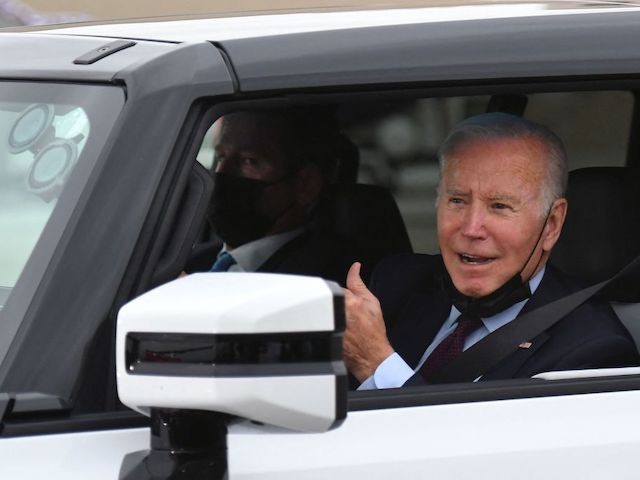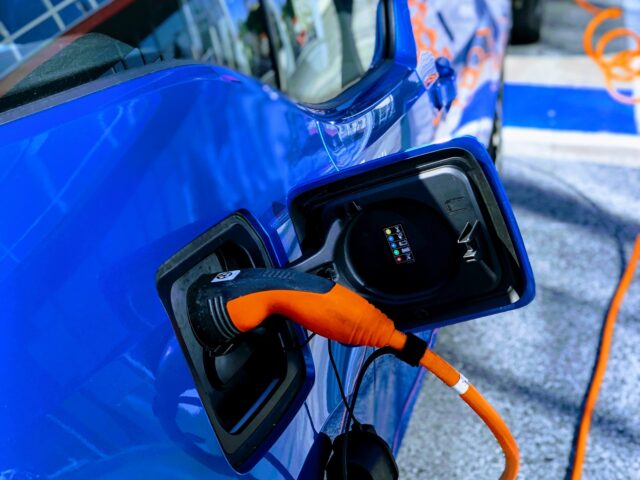So many new electric vehicles (EVs) on the road, so few places to charge them.
That is becoming a common cry as the Biden administration’s determined push to get people into EVs is far in advance of the infrastructure to make it possible – especially for those who rent in low income, high density inner city areas.
AP reports people who rent are also more likely to buy used EVs that have a lower range than the latest models, making reliable public charging even more critical for them, however power outlets for recharging are more conspicuous by their absence than their availability.
Cities from Portland to Los Angeles to New York City are desperate to deliver public charging solutions as drivers string power cords across sidewalks, stand up their own private charging stations on city right-of-ways and line up at public facilities, according to AP.
Even when charging points can be found, that does not necessarily mean they work.
One in four public electric vehicle charging stations in the San Francisco Bay Area does not function, according to a study released in May.
One in four public electric vehicle charging stations in the San Francisco Bay Area does not work, according to a new study. https://t.co/mSJKkZFwGI
— Breitbart News (@BreitbartNews) May 9, 2022
The Biden administration last month approved plans from all 50 states to roll out a network of high-speed chargers along interstate highways coast-to-coast using $5 billion in federal funding over the next five years, as Breitbart News reported.
But states must wait to apply for an additional $2.5 billion in local grants to fill in charging gaps, including in low- and moderate-income areas of cities and in neighborhoods with limited private parking.
“We have a really large challenge right now with making it easy for people to charge who live in apartments,” Jeff Allen, executive director of Forth, a nonprofit that advocates for equity in electric vehicle ownership and charging access, told AP.

U.S. President Joe Biden in an electric hummer as he tours the General Motors Factory ZERO electric vehicle assembly plant in Detroit, Michigan on November 17, 2021. (MANDEL NGAN/AFP via Getty)
“There’s a mental shift that cities have to make to understand that promoting electric cars is also part of their sustainable transportation strategy. Once they make that mental shift, there’s a whole bunch of very tangible things they can — and should — be doing.”
The quickest place to charge is a fast charger, also known as DC Fast. Those charge a car in 20 to 45 minutes.
But slower chargers which take several hours, known as Level 2, still outnumber DC fast chargers by nearly four to one, although their numbers are growing.
Charging an electric vehicle on a standard residential outlet, or Level 1 charger, isn’t practical unless you drive little or can leave the car plugged in overnight, as many homeowners can, as AP sets out.
Nationwide, there are about 120,000 public charging ports featuring Level 2 charging or above, and nearly 1.5 million electric vehicles registered in the U.S. — a ratio of just over one charger per 12 cars nationally, according to the latest U.S. Department of Transportation data from December 2021.
But those chargers are not spread out evenly: In Arizona, for example, the ratio of electric vehicles to charging ports is 18 to one and in California, which has about 39% of the nation’s EVs, there are 16 zero-emissions vehicles for every charging port.
Joe Biden's push for electric vehicles does not take into consideration that the U.S. depends on China for the components for building batteries. https://t.co/QYU5voZ9Tt
— Breitbart News (@BreitbartNews) April 25, 2022
A briefing prepared for the U.S. Department of Energy last year by the Pacific Northwest National Laboratory forecasts a total of just under 19 million electric vehicles on the road by 2030, with a projected need for an extra 9.6 million charging stations to meet that demand.
In Los Angeles, for example, nearly one-quarter of all new vehicles registered in July were plug-in electric vehicles.
The city estimates in the next 20 years, it will have to expand its distribution capacity anywhere from 25 percent to 50 percent, with roughly two-thirds of the new power demand coming from electric vehicles, said Yamen Nanne, manager of Los Angeles Department of Water and Power’s transportation electrification program.
Despite the challenges presented by charging an EV, California is one place where drivers will soon have no choice.
A YouTuber recently demonstrated that buyers of GMC’s new electric Hummer better clear their calendars if the truck is running low on battery charge. https://t.co/KOe5iCKgig
— Breitbart News (@BreitbartNews) October 2, 2022
The state confirmed last month a decision made by Gov. Gavin Newsom (D) in 2020 to ban the sale of gasoline-powered cars in the state by 2035, a bold climate goal that will close businesses, cut jobs, and increase strain on the power grid without delivering any demonstrable impact on overall climate conditions.
Electricity demand is expected to grow by 40 percent as drivers make the switch even as Tesla recently told Texas drivers to restrict charging in a power shortage in July.
Liberal states such as Massachusetts and Washington are expected to follow suit before the year is out.

COMMENTS
Please let us know if you're having issues with commenting.